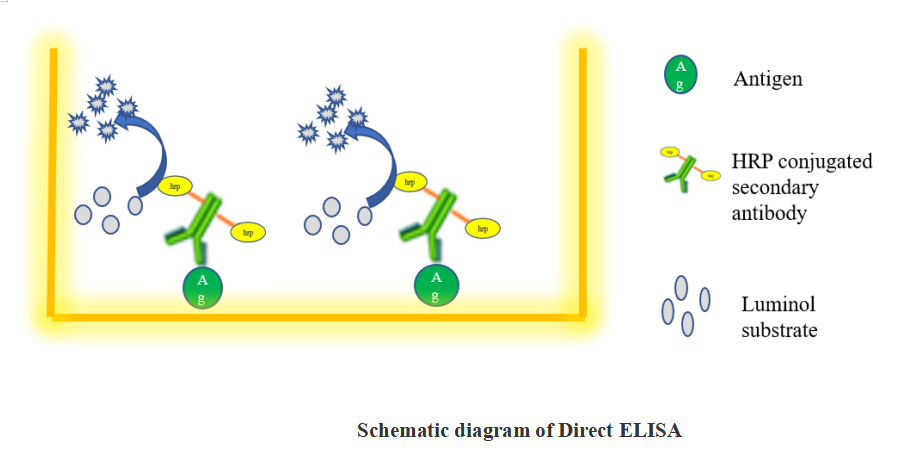What is Direct ELISA
-
1. Prepare antigen at 1 ug/mL in PBS and load 100 µL per well. Cover plate to minimize evaporation. Allow antigen to bind at 4° C overnight. The time required to bind antigen varies and may range from a few hours to overnight. Wash 3 times with wash buffer (PBS +0. 5%tween 20).
-
2. Add 100 µL blocking solution (1% BSA in PBS) per well. Allow blocking to occur at 37ºC for 1 hours. Remove blocking solution and wash 3 times with wash buffer.
-
3. Prepare enzyme conjugated secondary antibody by dilution in PBS or use the recommended dilution ranges. Load 100 µL of diluted enzyme conjugated antibody per well. Allow the conjugate to bind at 37ºC for 1 hours. Remove conjugate and wash 3 times with wash buffer.
-
4. Add 100 µL of desired substrate solution (TMB) per well. Allow color to develop at room temperature and stop the reaction with stopping buffer (1M H2So4)
-
5. Read absorbances at 450nm on plate using microplate reader.







 Guidence of GeneMedi's protocol / procedure for the diagnostics application:
Guidence of GeneMedi's protocol / procedure for the diagnostics application: 